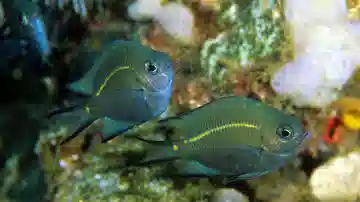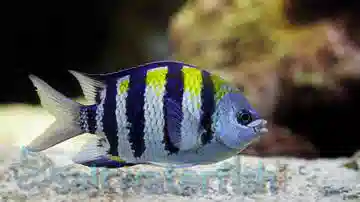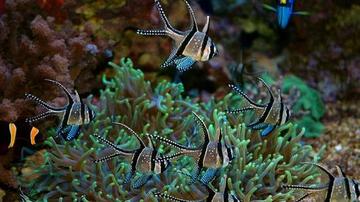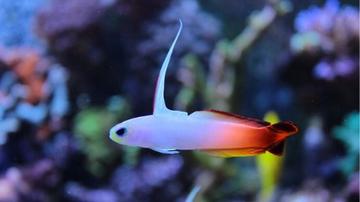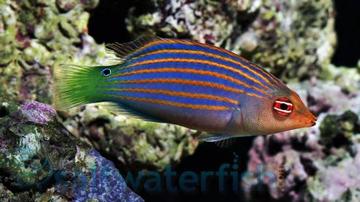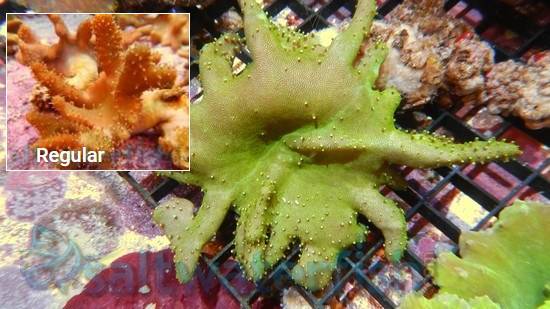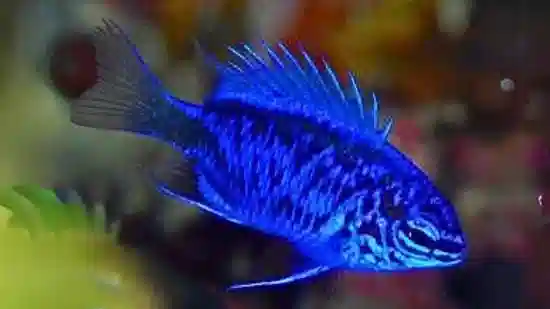Springer Damsel
Chrysiptera springeri
(3 Reviews)
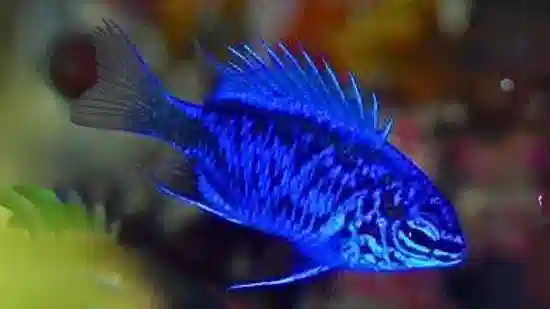
Springer Damsel
Chrysiptera springeri
(3 Reviews)
{{ item.name }}
Size: {{ item.extra_field_3 }}
${{ getFormattedPrice(item.saleprice) }} ${{ getFormattedPrice(item.price) }}
To join the waiting list, click here
Free Shipping
With
$199.00
or more in Marine Life.
More details...
Springer Damsel Care Facts
| Care Level: | Easy |
|---|---|
| Temperament: | Peaceful |
| Diet: | Omnivore |
| Reef Safe: | Yes |
| Minimum Tank Size: | 30 gallons |
| Max Size: | 2 inches |
The Springer Damsel, Chrysiptera springeri, also known as the Blue Sapphire Damselfish is a beautiful blue-sheened damsel that can be a beneficial member to any tank as a flat-worm eater. The Springer Damsel is a great fish for beginner and expert aquarists alike as it is beneficial, beautiful, and easy to care for. They should be housed in tanks of at least 25 gallons with some rockwork for them to hide in. They can be, but are not always, aggressive towards sessile inverts. Overall, this is a great beginner fish as it is reef safe, hardy, and easy to care for and fits well in smaller tanks.
Comprehensive Guide to Keeping the Springer Damsel (Chrysiptera springeri)
Welcome to the world of saltwater aquariums, where the Springer Damsel (Chrysiptera springeri) adds a burst of color and dynamic energy to your marine setup. In this detailed guide, we'll explore various aspects of caring for the Springer Damsel, covering habitat, reef compatibility, size, lifespan, diet, aquaculture availability, compatibility with other species, coloration changes, temperament, tank requirements, and essential water conditions.
Habitat and Natural Behavior of the Springer Damsel
The Springer Damsel, native to the Western Pacific Ocean, is commonly found near coral reefs and rocky outcrops. These vibrant blue and yellow fish exhibit an active and social behavior, making them a captivating choice for marine enthusiasts.
Reef Compatibility of the Springer Damsel
Known for their reef-safe nature, Springer Damsels are excellent choices for both novice and experienced hobbyists looking to enhance their coral-dominated aquariums. Their small size and non-aggressive demeanor contribute to a harmonious community.
Size and Lifespan of the Springer Damsel
Typically reaching sizes of up to 2.5 inches (6.4 cm), Springer Damsels have a lifespan of approximately 3 to 5 years in captivity. Providing proper care and a suitable environment will contribute to their longevity.
Diet in Captivity for the Springer Damsel
Springer Damsels are omnivores with a diverse palate. In captivity, they readily accept high-quality flake or pellet food. Supplement their diet with frozen or live options such as brine shrimp and mysis shrimp to ensure optimal nutrition and coloration.
Aquaculture and Availability of the Springer Damsel
Thanks to advancements in aquaculture, Springer Damsels are readily available to hobbyists. Aquacultured specimens are not only more environmentally sustainable but also tend to adapt well to aquarium life.
Compatibility of the Springer Damsel with Tank Mates
Springer Damsels are known for their peaceful temperament, making them suitable companions for a variety of tankmates. Consider other non-aggressive species that share similar environmental preferences. Here are five compatible tank mates:
- Firefish Goby (Nemateleotris magnifica):
- Scientific Name: Nemateleotris magnifica
- Husbandry Requirements: Provide hiding spaces and a sandy substrate.
- Banggai Cardinalfish (Pterapogon kauderni):
- Scientific Name: Pterapogon kauderni
- Husbandry Requirements: Include shelter and low-light areas.
- Yellow Clown Goby (Gobiodon okinawae):
- Scientific Name: Gobiodon okinawae
- Husbandry Requirements: Provide caves and overhangs for shelter.
- Royal Gramma (Gramma loreto):
- Scientific Name: Gramma loreto
- Husbandry Requirements: Include rockwork for hiding and territorial spaces.
- Chalk Bass (Serranus tortugarum):
- Scientific Name: Serranus tortugarum
- Husbandry Requirements: Offer rocky shelters and maintain stable water conditions.
Sexual Dimorphism of the Springer Damsel
Sexual dimorphism in Springer Damsels is minimal, with males and females exhibiting similar coloration and size.
Juvenile to Adult Coloration Changes in the Springer Damsel
Juvenile Springer Damsels typically display a more subdued coloration, gradually transitioning into their vibrant adult colors as they mature. Expect a striking contrast of blue and yellow hues, adding visual appeal to your aquarium.
Tank Requirements for the Springer Damsel
Minimum Aquarium Size: A tank with a capacity of 20 gallons or more is recommended to provide ample swimming space for your Springer Damsel.
Water Conditions:
- pH: Maintain a stable pH level between 8.1 and 8.4.
- Salinity: Keep salinity within the range of 1.020 to 1.025.
- Water Temperature: Maintain a temperature between 74°F and 78°F.
- Water Flow: Moderate water flow mimics their natural habitat, promoting a healthy environment.
Other Common Names for the Springer Damsel
Springer Damsels are also known as Springer's Demoiselle.
Notes for New Hobbyists
For new hobbyists, it's crucial to establish a stable and mature aquarium before introducing Springer Damsels. Regular water testing, proper filtration, and adherence to recommended water parameters contribute to the overall health and well-being of your marine community.
Why Choose the Springer Damsel from Saltwaterfish.com
At Saltwaterfish.com, we take pride in providing healthy and vibrant marine life. Our commitment to sustainability is evident in offering aquacultured Springer Damsels, reducing the impact on wild populations. With rigorous selection processes, you can trust Saltwaterfish.com to deliver a quality Springer Damsel for your thriving marine community. Visit our website to make a conscientious choice for your saltwater aquarium.
Hardy little fish! They were eating well from day one, and are fearless, curious little guys. The description of them as peaceful is accurate, which is why I wanted the Springer damsels. Some of the other damsels will kill each other off. Coloring is not quite as bright as the photo but a beautiful dark blue
Reviewed by: Maureen Croft on May 29, 2023
Nicely sized. Arrived healthy and acclimated easily. Really beautiful coloration. Seems well-behaved with the other fish in the tank. He is curiously exploring the tank and cautiously venturing out of the rockwork.
Reviewed by: Heidi G on March 10, 2022
Would buy again, looks cool.
Reviewed by: Anthony Poser on June 21, 2017


